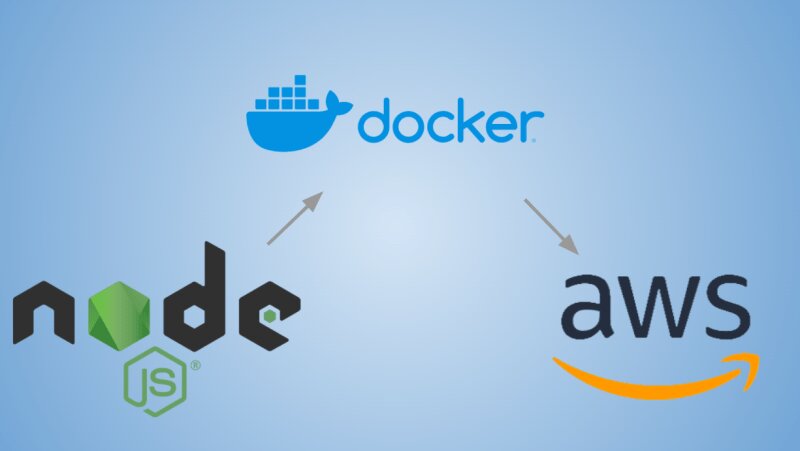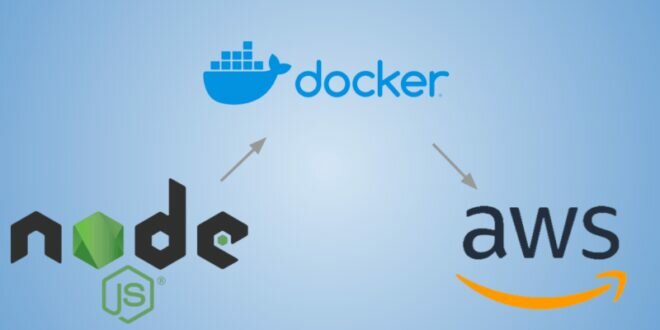
Deploy Docker To Aws – Architecture Transformations for Cloud Operations and Market Games Network News Business Smart Big Data Business Cloud Productivity Strategy Cloud Enterprise Financial Management Computing Contact Center Containers Desktop Database and Application Flow DevOps Tools Front End Web and Mobile
Industries HPC Machine Integration and Automation Internet of Things Learning Media Messaging and Targeting Microsoft Workloads in Networking and Delivery Open Source Content Public Sector Quantum Computing Robotics SAP Security Startups Training and Certification Storage
Deploy Docker To Aws

中国版 Édition Française Deutsche Edition 日本版 Korean Edition
The Aws Journey Part 1: Deploying Your First Docker Image
There are many reasons why containers have become popular since Docker democratized access to basic Linux primitives.
Possible. One reason is that containers are not tied to a specific infrastructure or stack, so developers can easily migrate them (usually from their laptops, through the data center, and to the cloud). Although we spend most of our time talking about container organizers these days, let’s not forget that the true portability of containers’ core is guaranteed not only by the YAML choreography around them, but by the standard packaging and runtime requirements (this YAML choreography creates some time. sum of operational overhead and gravity).
According to Docker, “[Build] is currently used by millions of developers and with over 650,000 Build files on GitHub.” There is a good reason for this; Docker Compose is an elegant yet very simple way to describe your application stack in containers. This format has been and will continue to be used by thousands of developers to run applications that require multiple Docker containers and service-to-service communication. Often, these developers are also looking for a convenient way to run their code on.
With that spirit in mind, Docker began collaborating on the open Docker Compose specifications earlier this year to create a path for developers using the Docker Compose format to deploy their applications on Amazon ECS and Fargate. In July, Docker released a beta for Docker Desktop that includes these functions, and on September 15, Docker announced an updated experience on the Docker Desktop stable channel.
Spring Boot Microservices Deployments On Aws Eks
With all that background out of the way, let’s get our hands dirty. The rest of this blog is structured around two main themes:
In addition to these themes, there is a third and final section with some ideas and practical suggestions regarding this integration.
Four years ago, I created a simple app (but representative of real life) that I can use as a basis for learning new technologies. Instead of focusing abstractly on technology and trying the tutorial that came with it, I wanted to focus on “my application” and try to use the technology in my defined and current context. At the end of the day, that’s what real customers do. Their goal is not to run the example successfully, but rather to apply the technology they are evaluating to their application stack. I wanted to simulate the customer’s technology adoption patterns.

Enter Yelb. Yelb is a traditional web application that consists of four components: a user interface, an application server, a storage server, and a database.
Quick Ci Cd From Github To Prod With Aws Ecr, Ecs Creating A Serverless Docker Container
When I started learning different container-based solutions over the years, I applied them to Yelb. You can deploy a containerized version of Yelb with Docker Compose, Kubernetes, and ECS today. This required me to write an entire YAML choreography for each of the musicians (in the specific order I mentioned) while using the same container images.
Msgstr “What if I don’t want to or can’t spend time rewriting the original Docker Compose YAML file to a local ECS YAML file? Will this Docker Compose/ECS integration work for Yelb?”
Interestingly, my test worked out of the box with the Docker Compose file I wrote over 4 years ago.
Let me show you what the developer experience looks like. Next, we’ll touch on the mechanics of how this works behind the scenes. All you need right now is Docker Desktop and an account. I am using Docker Desktop (stable) version 2.5.0.1 for this test.
How To Deploy Docker Containers
The first thing you need to do is clone the Yelb repository and change to the distribution directory that contains the Compose YAML file in the repository (
Create a YAML file in the repository. This will launch the Yelb app on your workstation by default:
. If you come from a Docker background, you’ve probably used this workflow thousands of times over the past few years. There is nothing new here.

As we often say, a picture is worth 1000 words. This is a visual representation of the stream we just ran (note that nothing is located in the cloud yet):
How To Deploy Vapor App(server Side Swift) To The Aws? — Shawn Baek
Now let’s see how we can distribute the same stack to ECS. To do this, we need to prepare our Docker Desktop environment.
First, we will create a new docker context so that the Docker CLI can point to a different endpoint. By default, it points to a local context called Docker.
(this is the Docker runtime on your machine) but we will add the Amazon ECS context using the command:
Note on details: If you are already familiar with it, your CLI environment is probably already ready with default or named profiles. No problem, Docker CLI can use these credentials. If not, Docker will allow you to read the environment variables with your workflow credentials (_ACCESS_KEY_ID and _SECRET_ACCESS_KEY) or request those credentials and store the credentials for you ($HOME/./credentials).
Cross Account Amazon Elastic Container Registry (ecr) Access For Ecs
The credentials in the profile must have sufficient permission to use the application in it. This is for example VPCs, ECS tasks, Load Balancers etc. Includes creation permissions.
To do this, notice how I used the main docker binary instead of the docker compile binary I used to use locally above. The docker binary now comes with extended functionality for building dockers (more on that later).
The component is available on a specific port from a specific endpoint. In the example above, when I point my browser

I see the same application (described in the same Docker Compose file) used in ECS and Fargate.
Deploying A Docker Application To Aws Ecs
So far we’ve focused on how you can reuse a 4-year-old Docker Compose file. Now let’s see how this integration can make the experience better for future deployments.
Integrating Docker Compose with Amazon ECS can improve the developer experience in at least a few dimensions: less writing of YAML and the ability to test your app locally (when connecting to cloud services).
The best way to explain this is to focus on another example. Consider that you need to deploy an application that uses the following architecture:
The program (running in the ECS task) reads messages from an SQS queue and processes files in two folders of an EFS volume.
Docker Deployment Guide
If you were to code the infrastructure details above using CloudFormation, you would easily write a few hundred lines of YAML.
If you were to use Docker Compose to define this request, it would be as simple as typing these 20 lines:
Allowing the developer to assign an internal IAM policy to associate with the application (such as an ECS task role).

The app is running right now and all I had to do to use it was write 20 lines of YAML.
Recipe For Resilient Engineers: Aws Fargate, Ecs, Docker And Angular
It’s about improving the developer experience, but as an engineer, you might also be wondering how to quickly iterate on this app on your workstation without necessarily having to deploy it to the cloud when trying out quick code changes. The beauty of this integration is that it maps standard Docker builds to builds. let’s have
Create it. However, when used with context, the Docker volume object maps to an EFS object and thus an EFS volume is created.
And point to the local Docker runtime. Even though the render file is still semantically correct, if we did that, we wouldn’t have access to the services we need to interact with to test my app (i.e. SQS in my example above). This is because my application does not have permission to read from the SQS queue for example.
Local Docker context, but ECS will automatically embed local container endpoints. This is a container that emulates sample metadata services, including the IAM credentials it receives from the local source.
Deploy Sitecore 10 To Kubernetes With Aws Eks
. In the cloud, IAM sales occur by adding an IAM role to an ECS task. Natively, this functionality is emulated by ECS’s native container endpoints, allowing the application to run transparently.
Note that the application logs are available in the local stdout console instead of Cloudwatch (this happens when you use it). Also note how the boto client SQS connection (SDK for Python) is initialized properly.
Deploy docker app to aws, deploy docker on aws, aws deploy docker, deploy docker in aws, deploy docker container to aws, deploy docker image to aws ec2, aws deploy docker image, docker deploy to aws, deploy docker, aws deploy docker container, deploy docker compose to aws, deploy docker image to aws
 GoInspiration | Best Forex, Stock, Gadget, and Internet Information Apps
GoInspiration | Best Forex, Stock, Gadget, and Internet Information Apps